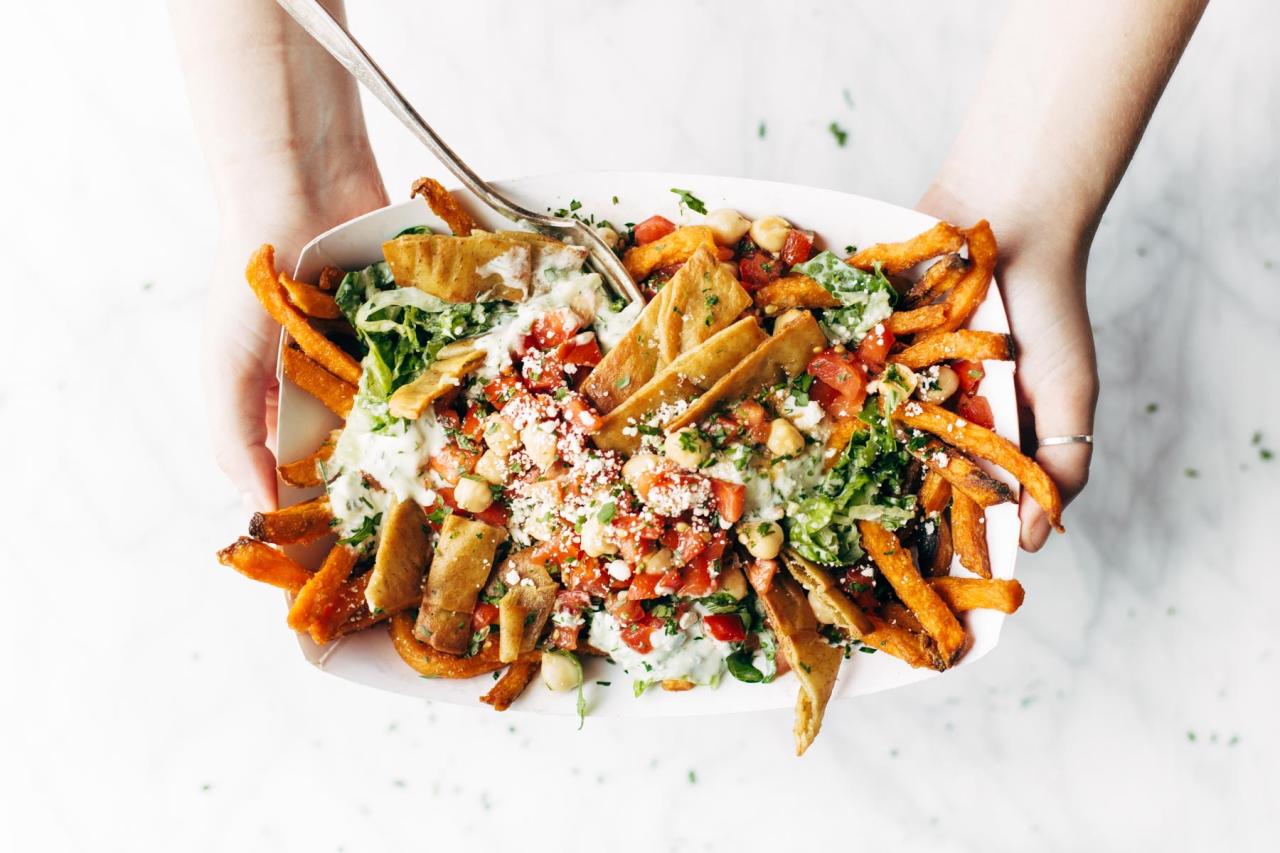Imagine the vibrant tapestry of street food, its tantalizing aromas and bold flavors, reimagined through the lens of the Banting diet. This culinary adventure unveils a collection of recipes that cleverly transform beloved street food classics into healthy, low-carb delights. Prepare to savor the familiar tastes of your favorite street eats, meticulously crafted to align with Banting principles, without sacrificing the rich textures and satisfying mouthfeel that make street food so irresistible. Each recipe is a testament to the creative possibilities of healthy eating, showcasing how delicious and fulfilling a Banting lifestyle can be.
From the sizzling satay skewers to inventive adaptations of other globally-inspired street food, this guide offers detailed instructions, nutritional breakdowns, and stunning visuals to inspire you in the kitchen. Learn innovative techniques for substituting high-carb ingredients while preserving the authentic flavors, discover the secrets to visually recreating the charm of street food presentation, and explore variations to suit different dietary needs and preferences. This is more than just a cookbook; it’s a journey into the heart of flavorful, healthy eating.
Flavor Profiles and Adaptations
Replicating the vibrant, often intensely savory and sweet, flavors of beloved street foods within the constraints of a Banting diet presents a unique culinary challenge. The inherent high-carbohydrate nature of many street food staples, from the fluffy buns of a bao to the starchy noodles of pad thai, necessitates creative substitutions and a keen understanding of flavor balancing. The goal isn’t merely to create a low-carb version; it’s to capture the essence of the original dish, evoking the same delicious memories and satisfying the same cravings.
Adapting the bold flavor profiles of street food to a Banting framework requires careful consideration of ingredient replacements. Traditional high-carb elements, such as noodles, rice, and bread, must be replaced with low-carb alternatives. This often involves substituting cauliflower rice for regular rice, zucchini noodles for pasta, or almond flour for wheat flour in breading. The challenge lies in ensuring these substitutions don’t compromise the overall taste and texture, a delicate balancing act between dietary restriction and culinary excellence. Successfully navigating this requires a deep understanding of flavor chemistry and a willingness to experiment.
Innovative Techniques for Maintaining Authentic Taste
Maintaining the authentic taste of street food while adhering to Banting principles relies on several key techniques. First, focusing on the intensity of flavor through the use of spices and herbs is crucial. Second, the careful selection of high-quality, flavorful ingredients can compensate for the absence of high-carb elements. Finally, utilizing creative textural substitutions can mimic the mouthfeel of the original dish. These techniques, when employed strategically, allow for the creation of Banting-friendly versions that are remarkably similar to their high-carb counterparts.
Spice and Herb Enhancement
Spices and herbs play a pivotal role in elevating the flavor profiles of Banting-friendly street food adaptations. Instead of relying on the inherent sweetness or starchiness of traditional ingredients, a robust blend of spices can provide depth and complexity. For instance, a Banting-friendly version of a spicy Thai curry might incorporate generous amounts of lemongrass, galangal, kaffir lime leaves, and chilies to deliver the signature pungent and aromatic notes, while coconut aminos replaces soy sauce for umami. Similarly, a Banting take on Indian street food might leverage a vibrant masala blend, featuring cumin, coriander, turmeric, and garam masala, to create a rich and flavorful experience without relying on high-carb bases. The careful selection and combination of spices and herbs are instrumental in crafting authentic and satisfying Banting-friendly street food.
Visual Appeal and Presentation
Recreating the vibrant energy and tempting aromas of street food in a Banting context requires a keen eye for detail and a playful approach to presentation. The goal isn’t to simply mimic the originals, but to capture their essence – the bold colors, the satisfying textures, and the sense of joyful, impromptu eating – while adhering to the principles of the Banting diet. This involves thoughtful plating, strategic use of garnishes, and a focus on showcasing the natural beauty of the ingredients.
The visual appeal of Banting street food hinges on creating dishes that are both healthy and aesthetically pleasing. By understanding the key visual elements of traditional street food and cleverly adapting them, we can craft Banting versions that are just as captivating. We can achieve this through careful consideration of color contrasts, the strategic use of height and texture in plating, and the addition of vibrant garnishes that enhance both flavor and visual interest.
Banting Street Food Dishes: A Visual Feast
The following three examples illustrate how to visually translate the spirit of popular street foods into delicious and visually stunning Banting adaptations.
1. Banting “Pad Thai”: Imagine a vibrant plate featuring swirls of bright orange, lightly sweet and savory cauliflower “noodles” tossed with succulent, tender strips of grilled chicken breast. Scattered across the top are vibrant green slivers of spring onions, a sprinkle of toasted sesame seeds for a touch of nutty earthiness, and a few finely chopped cilantro leaves for freshness. A squeeze of lime adds a pop of color and acidity, while a scattering of chopped peanuts (carefully measured for portion control) provides a satisfying crunch. The overall effect is a lively, colorful dish that evokes the familiar flavors and textures of Pad Thai without the carbs.
2. Banting “Tacos al Pastor”: Picture this: thinly sliced, marinated pork tenderloin, seared to perfection, arranged artfully on small, crisp lettuce cups. The pork’s rich, reddish-brown color is accentuated by the vibrant green of the lettuce and a scattering of finely diced red onion, providing a contrasting texture and a spicy kick. A dollop of creamy avocado crema (made with avocado, sour cream, and lime juice) adds a touch of elegance and richness, while a sprinkle of chopped coriander offers a fresh, herbaceous note. The presentation mirrors the layered flavors and textures of traditional tacos, with a visually appealing and satisfying result.
3. Banting “Loaded Baked Potato”: Forget the potato! Instead, envision a beautifully presented bowl filled with a fluffy cloud of cauliflower mash, seasoned perfectly and lightly browned on top. This forms the base, a creamy white canvas upon which to build a colorful and flavorful landscape. The “loadings” consist of a medley of colorful ingredients: crisp bacon bits scattered artfully across the top, alongside vibrant chunks of sautéed bell peppers and onions, their bright colors popping against the creamy background. A generous drizzle of melted cheddar cheese (carefully chosen for its lower carbohydrate content) adds a rich, golden hue and a satisfyingly gooey texture. This dish mimics the comforting familiarity of a loaded baked potato, yet remains entirely within the bounds of a Banting diet, visually and deliciously.
Visually Appealing Food Photography for Banting Street Food
Achieving stunning food photography for Banting street food recipes involves a combination of careful lighting and thoughtful composition.
Lighting: Natural light is your best friend. Shoot near a window, ideally on a slightly overcast day to avoid harsh shadows. Avoid direct sunlight, which can create harsh highlights and wash out colors. Consider using a reflector (even a simple white piece of cardboard) to bounce light back into shadowed areas, enhancing depth and texture. The goal is to create soft, even illumination that highlights the textures and colors of the food.
Composition: Use a clean, uncluttered background to let the food be the star. Think about the “rule of thirds,” placing your dish off-center for a more dynamic composition. Pay attention to angles – shooting slightly from above often creates a more appealing perspective. Consider using props sparingly – perhaps a simple wooden board or a rustic napkin – to add context without distracting from the food. Ensure the food is styled attractively, with ingredients arranged thoughtfully to showcase their colors and textures. A few strategically placed garnishes can elevate the overall visual appeal.
Recipe Variations and Customization

The beauty of Banting recipes lies in their adaptability. By understanding the fundamental principles – focusing on healthy fats, limiting carbohydrates, and incorporating adequate protein – you can easily customize almost any recipe to suit individual dietary needs and preferences, or to transform a simple snack into a satisfying meal. This section explores variations of a single Banting street food recipe, demonstrating how simple adjustments can create a diverse range of culinary experiences.
Banting Samosa Variations
We will use a Banting samosa recipe as our base. The classic version features a spiced cauliflower and chickpea filling encased in a crispy almond flour pastry. From this foundation, we can develop three distinct variations to cater to diverse dietary needs and preferences.
Vegetarian Banting Samosa
This variation maintains the original recipe’s vegetarian nature, focusing on enhancing the flavor profile and texture. The filling is enriched with finely diced bell peppers (red and yellow for vibrant color), providing sweetness and a satisfying crunch. A sprinkle of finely chopped cilantro adds freshness and a pop of green to the filling, complementing the warm spices. The pastry remains unchanged, ensuring a consistent, satisfying texture. The finished samosa presents a beautiful medley of colors and textures, visually appealing and bursting with flavor.
Dairy-Free Banting Samosa
For individuals avoiding dairy, a simple substitution resolves any potential issues. Instead of using butter in the pastry, we substitute coconut oil, maintaining the pastry’s desirable flakiness and rich flavor. The filling remains unchanged, ensuring a familiar and satisfying taste. The visual appeal is consistent with the original recipe, with the golden-brown pastry contrasting beautifully with the vibrant filling. This demonstrates how a small adjustment can make a significant difference in catering to specific dietary requirements.
High-Protein Banting Samosa
This variation aims to increase the protein content without compromising flavor. We add a generous portion of shredded, cooked chicken breast to the original filling. The chicken adds a savory dimension, complementing the spices and creating a more substantial, protein-rich snack or light meal. The addition of chicken also adds a subtle variation in color and texture to the filling, making it visually more interesting. This option is perfect for those looking for a more filling and satisfying Banting samosa.
Portion Sizes and Serving Suggestions
The same Banting samosa recipe can be adapted to serve different purposes. For an appetizer, smaller, bite-sized samosas, served with a zesty avocado crema (a creamy, dairy-free dip made with avocado, lime juice, and cilantro), create a visually stunning and flavorful starter. For a main course, larger samosas can be served with a side salad of mixed greens, providing a balanced and healthy meal. A visually appealing presentation could involve arranging the samosas artfully on a platter, garnished with fresh herbs and a vibrant dip. The adaptability of this recipe demonstrates its versatility for various occasions and dietary preferences.
Infographic Design Suggestions
An infographic showcasing the Banting samosa variations could use a three-panel layout. Each panel would feature a visually appealing image of one variation: the classic, the dairy-free, and the high-protein samosa. Beneath each image, a concise description of the variation and its key ingredients would be listed. A consistent color scheme would be used throughout, with the use of vibrant colors to highlight the different ingredients. Clear, concise text and high-quality images would ensure readability and visual appeal, making the infographic informative and engaging. The infographic could also include a small section on portion sizes and serving suggestions, using images to illustrate the different serving options (appetizer versus main course). This visual representation effectively communicates the recipe’s versatility and adaptability.
This exploration of Banting recipes inspired by street food favorites has demonstrated that healthy eating doesn’t mean sacrificing taste or culinary adventure. By embracing innovative techniques and a focus on vibrant flavors, we’ve shown how to transform beloved street food classics into satisfying, low-carb meals. The detailed recipes, nutritional information, and visual guides provided empower you to recreate the magic of street food in your own kitchen, enjoying delicious and healthy meals that are both visually appealing and perfectly aligned with your Banting lifestyle. So, embrace the challenge, experiment with the recipes, and savor the delicious results!
User Queries
Can I use alternative sweeteners in these recipes?
Yes, many Banting-friendly sweeteners can be substituted, such as erythritol, stevia, or xylitol. Always check the nutritional information and adjust to your preferences.
Are these recipes suitable for vegetarians/vegans?
Some recipes can be easily adapted for vegetarian diets; however, vegan adaptations may require more significant substitutions. Check individual recipes for specific notes.
How long can I store leftover Banting street food?
Leftovers should be stored in airtight containers in the refrigerator for up to 3-4 days. Always ensure proper refrigeration to maintain food safety.
What are the best tools and equipment for preparing these recipes?
Basic kitchen tools like skewers, cutting boards, knives, and a good quality grill or pan will be sufficient. Specific tools may be mentioned in individual recipes.


